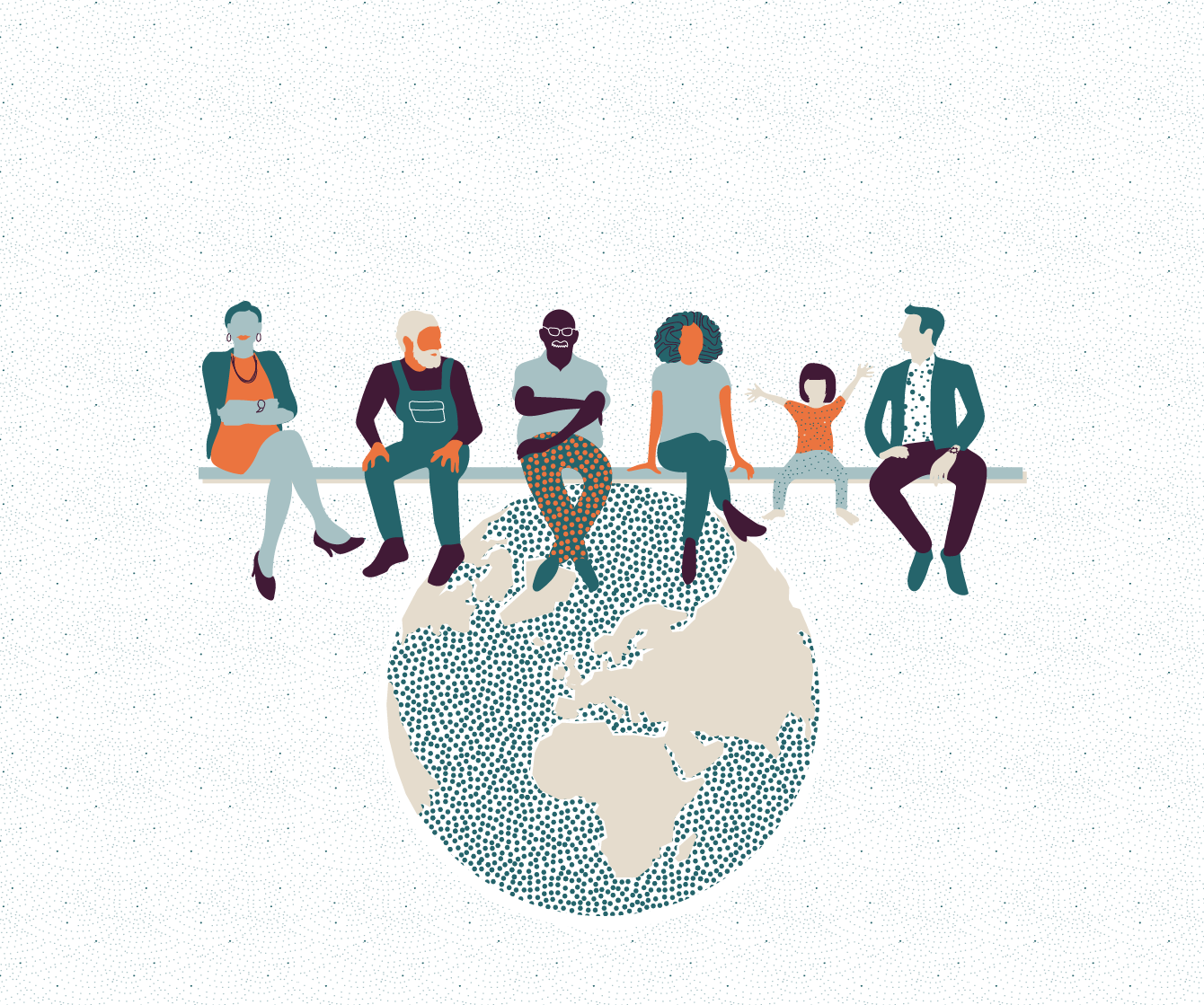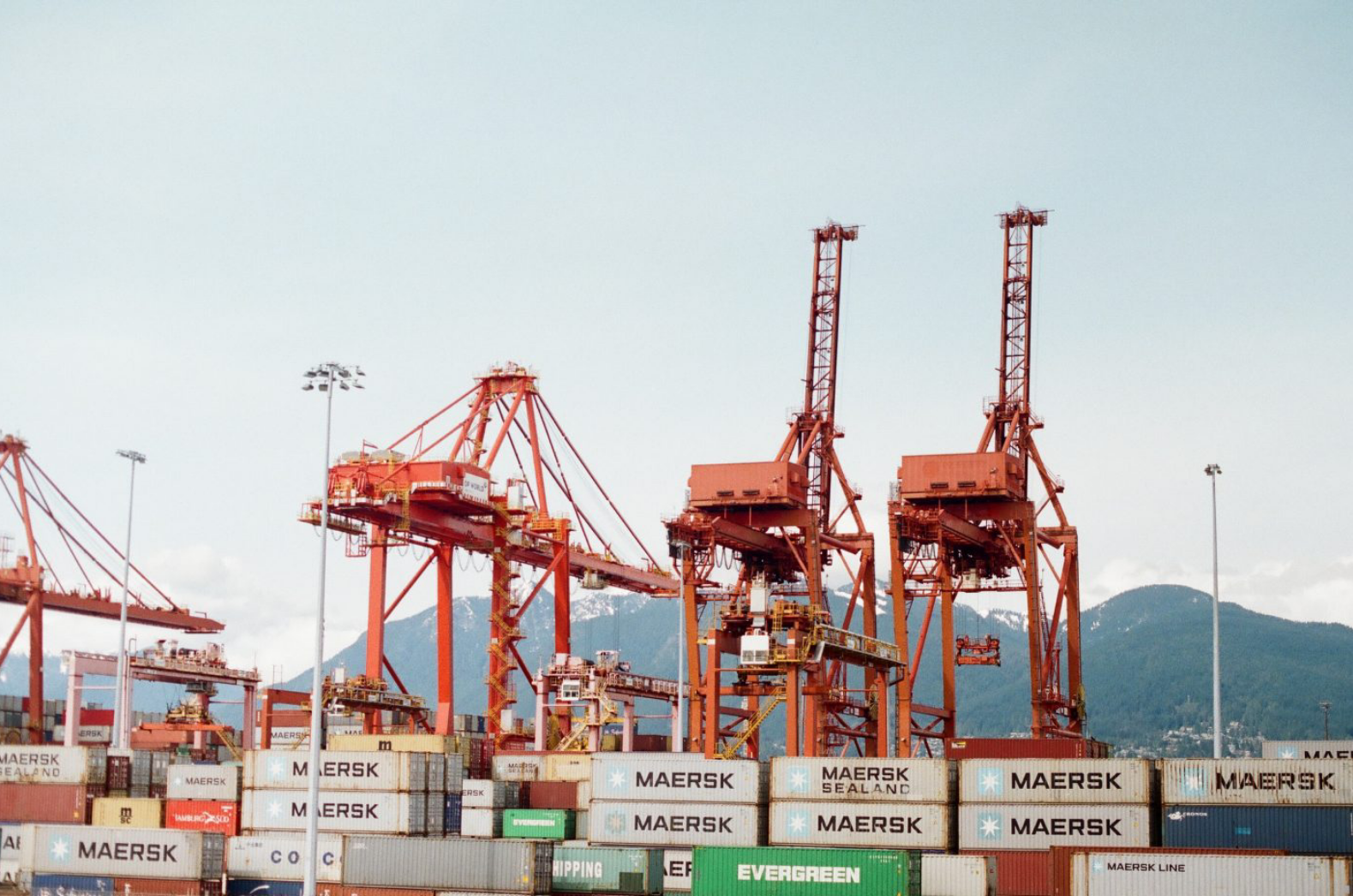Knowledge Base
Globalization
After three decades of poorly managed integration, globalization is today threatened by social discontent and the rise of populist forces. A new paradigm will need better ways not only to compensate those groups that have lost out, but to distribute the gains more broadly from the start.

The challenge
The long post-war wave of globalization has come to a halt and the world economy is now threatened by disintegration.
After decades of ever deeper integration, market-based globalization has entered a serious crisis. Trade integration has come to a halt and global trade growth has slowed down. Transnationalism is experiencing a profound crisis of credibility, which is most visible in the large number of people who see themselves as losers of a process over which they seem to have no control. Their votes have occasionally given rise to populist leaders who are now questioning the rules of globalization. These growing trade tensions have impacted export-dependent Germany more than most other countries. As a result of trade conflicts and the uncertainty surrounding Brexit, Germany’s industry entered into a recession in 2018.
The first signs of this crisis of globalization emerged in the aftermath of the Global Financial Crisis in 2008 when a major reversal of capital flows brought the world’s entire financial system to the brink of collapse.
Since then global trade has been growing at a lower rate than before the crisis. As a group of researchers around German economist Moritz Schularick, one of this Forum New Economy’s academic partners, has demonstrated (Funke et al, 2016), financial crises also tend to be followed by a rise of right-wing parties and populists, as has been the case with Brexit and the election of Donald Trump in recent times.
The first major political clash occurred on June 23, 2016, when the citizens of the United Kingdom, by a slim majority, voted to leave the European Union. This came as a shock to the European project, which for decades had been hailed as a success story of integration. At the same time, protests all but halted the Canada-EU Comprehensive Economic and Trade Agreement (CETA) and inhibited the ratification of the Transatlantic Trade and Investment Partnership (TTIP) with the United States. On November 8, Donald Trump was elected to the White House.
All this might appear as a turning point in the wave of post-World War II globalization. Ever since the Bretton Woods conference in 1944 and the signing of the General Agreement on Tariffs and Trade (GATT) in 1947, the United States had championed free trade and promoted trade liberalization around the world. This turning point has also interrupted a period of accelerated globalization that had transpired since the early 1980s.
In 2018 the US imposed import tariffs on solar panels, aluminum, steel, and washing machines from most countries including its closest allies. In addition, the Trump administration has embarked on a large-scale trade war against China. Some commentators have referred to the current crisis as a crisis of hegemony, reminiscent of the world economic crisis of the 1930s when the US failed to assume leadership by stabilizing the global economy (Kindleberger, 1986; Tooze, 2015; Tooze, 2018).
Fears have been mounting that the world might be disintegrating as it did in the 1930s when protectionism caused the volume of world trade to collapse by 30% (Stephen, 2019; Adam, 2019). The escalating trade tensions have particularly dampened the outlook for the global economy. In the eyes of the International Monetary Fund (2018) the “intensification of trade tensions, and the associated rise in policy uncertainty, could (…) disrupt global supply chains, […] lowering global productivity and [harming] low-income households disproportionately.” Germany, with its export-dependence is particularly vulnerable to this trend towards deglobalization as its industry has been declining more rapidly than in other countries.
This crisis is even more dangerous because to a great degree it originates from the negative side-effects of the market-driven globalization that has prevailed for some decades. Empirical studies have pointed to a strong link between the flipside of globalization and a subsequent rise in populist forces, which claims to “no longer surrender […] its people to the false song of globalism” (New York Times, 2016). In a famous study, the MIT economist David Autor and his colleagues argued that Chinese competition and the deindustrialization of the Manufacturing Belt helped Donald Trump win the 2016 presidential election (Autor et al, 2016).
This link seems to hold even for a country like Germany, which is supposed to be among the world’s major profiteers of globalization with its huge export surplus. According to a representative Forsa poll for the Forum New Economy in October 2019, only a slim majority of Germans state that globalization has brought about more advantages than disadvantages for them.
Another sign of a deep crisis of confidence is that less than 30 percent express the wish that the process of economic and financial globalization should be intensified further.
Recent research by a team of economists around Robert Gold from the Kiel Institute for the World Economy has demonstrated that economic distress in regions that have been particularly vulnerable to import-competition has increased the support for nativist and extremist politicians (Dippel et al., 2019). Complementary results have been obtained by Düsseldorf-based economist Jens Südekum, another of Forum New Economy’s partners. According to this work there is evidence that exposure to import competition from China and Eastern Europe has led to severe labour-market distress in the affected regions (Dauthet al, 2014). Combined with the findings by DIW economists around Marcel Fratzscher, who showed that distressed regions voted more often for the populist right-wing party AFD, this suggests a structural link between globalization and populism even in Germany (Franz et al., 2019).
As Robert Gold and his colleague Thiemo Fetzer have depicted in a new paper commissioned by Forum New Economy, this diagnosis generally also holds for other European countries.
What went wrong?
Liberalizing international trade will lift all boats, since the losers from globalization can easily be compensated.
There is perhaps no argument that economists agree upon more readily than that free trade generally increases overall economic welfare (New York Times, 2015; Alston et al., 1990). This unnuanced view, however, has been taken to its extremes over the last few decades, especially since the early 1980s by the rise in predominance of the paradigm that the market alone should regulate itself. Even though the old trade models in the tradition of David Ricardo, Eli Heckscher and Bertil Ohlin never disputed that there are winners and losers from liberalizing international trade, it was argued that the benefits would outweigh the costs. Yet, exactly how compensation would be provided by the winners to the losers was only an afterthought for most economists. In reality, compensation was barely forthcoming. Moreover, arguing that there were winners elsewhere in the country did not help the left behind.

While the era of trade liberalization began with the General Agreement on Trade and Tariffs (GATT) after the Second World War, there has been a striking acceleration of economic and financial globalization after 1980. From 1947 onwards, average tariff rates had already been reduced from 15% to 10% in the 1980s and to about 5% in 2010, as stated by Sebastian Dullien in a basic research paper (Dullien, 2018). From the 1970s onwards, countries increasingly pushed for the liberalization of non-tariff trade barriers, such as regulations and technical standards, and in some cases went even further than the rules stipulated by the World Trade Organization (WTO). A new era started in the 1990s and early 2000s when the integration of many formerly communist countries into the WTO caused a shock to many Western countries, and even more so the integration of the People’s Republic of China with its abundant and cheap workforce.
While benefits from the increase in global trade were visible to consumers in the form of new varieties of goods and lower prices, it had become apparent that many people employed in former manufacturing industries saw their jobs being outsourced to new countries.
The compensation mechanism, which economists had paid little attention to until then, was either nonexistent or ineffective. In the U.S. the famous manufacturing belt between New York and Indiana, once the economic powerhouse, came to be known as the rust belt in the 1980s. Recently, its name has changed again and the region has come to be known as the “Opioid Belt,” as drug related mortality rates have surged there over the past decade (Washington Post, 2019). Indeed, recent research has linked the election to Donald Trump in 2016 to the opioid crisis, which has been most severe in counties that have been hit hardest by deindustrialization (Monnat, 2016; Monnat and Brown, 2017).
With its huge supply of labor, the emergence of China shifted global trade patterns. Yet, the China shock may have had a particularly strong impact on the US. In Germany, which has a relative balanced of trade with China and runs an overall current account surplus, loss in some sectors may have been compensated more extensively by larger gains in other sectors. Labor market disruptions, on the other hand, also seem to have been driven by the rise of new low-cost competitors in Eastern Europe. As Jens Südekum and his international colleagues have reported, these disruptions also seem to have occurred in regions with major import-competing industries (as in the US), while regions specialized in export-competing industries experienced significant employment gains (Dauth et al, 2014).
However, even though overall employment might have benefitted from the past decades of trade integration, the regionality of the shocks have apparently increased support for parties of the far-right in Germany (Dippel et al, 2019).
For the 2019 European election, a study by the DIW economists Christian Franz, Marcel Fratzscher and Alexander S. Kritikos (2019) found that the vote share of the populist right-wing party AFD was particularly high in regions which experience high vulnerability with respect to globalization and digitalization.
The huge impact of the last three decades of hyper-globalization might be best analyzed by looking at how each part of the global income distribution fared between 1988 and 2008. The major winners are the emerging global middle class, in particular in China and India, and the top percent in rich Western countries. While these two groups have seen their real incomes increase, the clear looser of globalization seems to have been the former (lower and) middle-class in much of Europe and the US. Although the exact numbers are still subject to analysis and debate, recent research suggests that the very rich by far outperformed all other groups, with real incomes of the global top one percent growing at twice the rate as the bottom 50 percent (Lakner and Milanovic, 2013; Alvadero et al., 2018).
New Economy in Progress

Globalization produces discontent and policy needs to take costs and compensation more seriously.
Harvard economist Dani Rodrik has been one of the first and most famous economists to have warned that globalization may have quite negative impacts. Rather early Rodrik pointed out the losers as well as the shrinking gains from liberalizing trade when countries have reached a certain level of integration (Rodrik, 1998). Today, there is an emerging consensus among critical economists that liberalizing trade ever more cannot become an end to itself. Even the formerly highly orthodox OECD has recently published an entire report on “making trade work for all” (OECD, 2017).
In practice, the reduction and harmonization of trade barriers has also had a detrimental impact on employment and wages in many regions around the world. While theoretically the winners could have compensated the losers for their losses, in practice this has never happened.
New research tries to better understand the impacts of globalization and it evaluates adequate policy tools to cope with the negative effects of trade liberalization. While it is difficult to imagine another shock as severe as the integration of China into the global economy, there still seems to be a lot to learn for the future. The rise in employment of robots and artificial intelligence, for example, might very well be comparable in terms of its disruptive impact on labor markets.
Currently discussed policy recommendations to better manage globalization include the following:
- Labor market and distribution policies: International organizations such as the OECD (2017), IMF, World Bank and WTO (2017) have called for more active labor market policies, such as training programs and job search assistance, as well as more effective redistribution through social insurance and income support programs. Some academics like Branko Milanovic have gone further and called for a broader redistribution of the gains from globalization, for example through the introduction of an inheritance tax (Milanovic, 2017).
- Macroeconomic policies: For workers displaced by globalization a lot of distress can be alleviated if these workers can quickly acquire new employment. Because it is easier for workers to find a job during periods of growth, it has been suggested that macroeconomic policies should be used to stabilize economic growth (IMF, World Bank and WTO, 2017).
- Regional policies: Regions are affected differently by a trade shock. Regions that have a high concentration of export-competing industries may gain, while regions facing strong import-competition may lose from the liberalization of trade. Some authors have therefore suggested that regional policies should be employed to promote businesses in depressed areas (IMF, World Bank and WTO, 2017; Südekum, 2017).
- “Shallow” trade agreements: Some authors have argued that the efficiency gains from further trade liberalization are relatively small, whereas the distributional effects are relatively large. Dani Rodrik (2016) has argued that policy makers should refrain from “deep” trade agreements. However, this is still a fringe opinion.
- Increasing cross-border labor mobility: Some authors have argued for allowing more workers to migrate from poor to rich countries. Rodrik (2016) and Milanovic (2017) argue that the benefits from large, but controlled migration flows come at relatively little distribution costs.
- Industrial policies in developing countries: Other authors have emphasized the need for industrial policies, such as government support, subsidies or protectionism of selected industries in developing countries (Chang, 2002).
This knowledge base tries to summarize the broad lines of the paradigm debate for a broader public. The goal is to continuously expand and improve the knowledge base as it becomes progressively clearer what a new paradigm could consist of.







